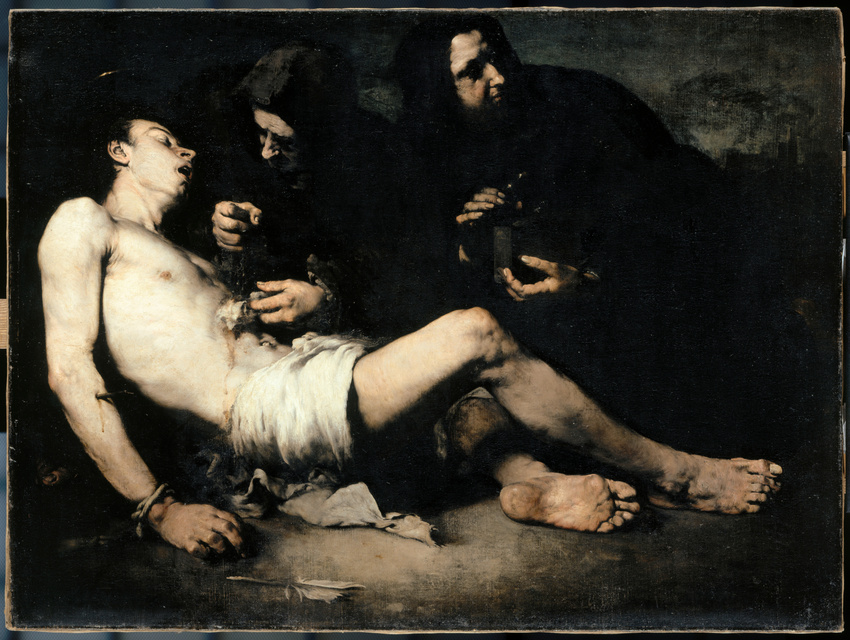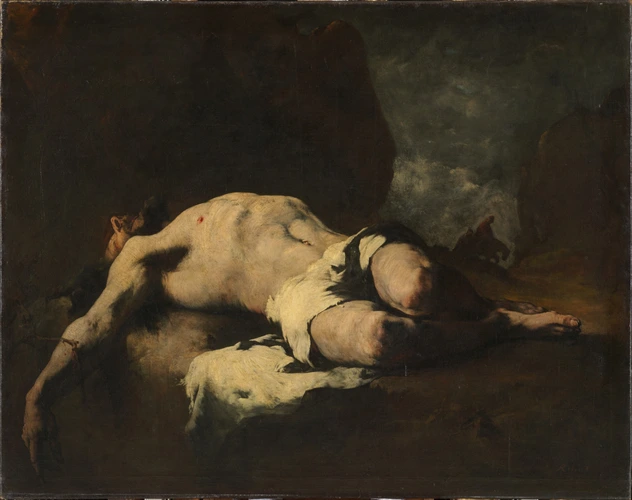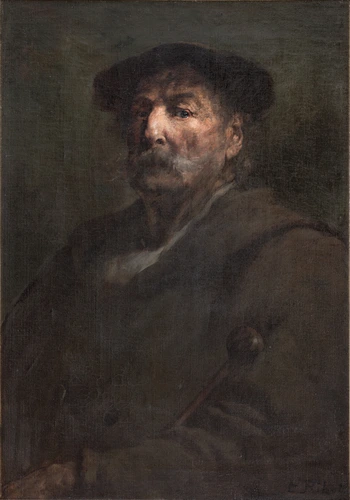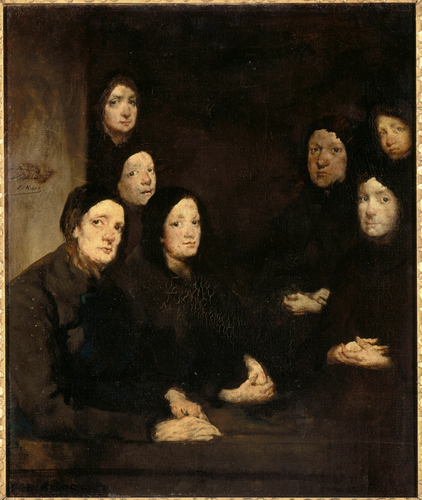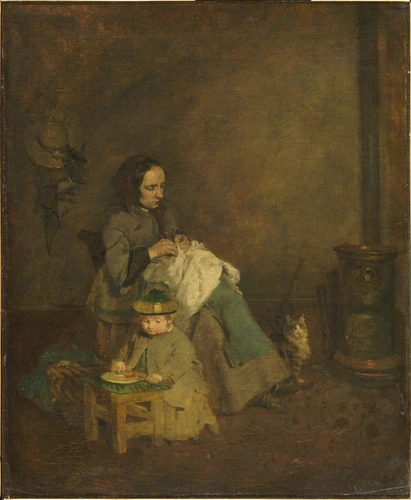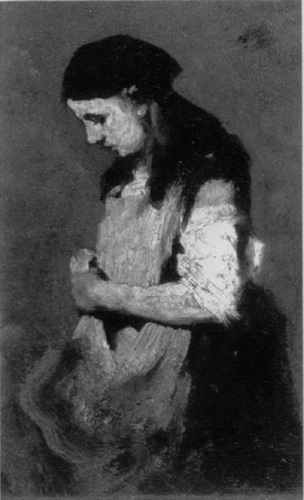Saint Sébastien martyr
"Ribot -Ribera": the parallel between the French artist who exhibited at the Salon in the 1860s and his illustrious 17th-century Spanish predecessor very quickly became a refrain. Each new exhibition justified the comparison and made more explicit the younger man's debt to his elder, since both the subject matter and the use of colour brought them together.
It was in the Spanish collections belonging to Louis Philippe and exhibited at the Louvre for over ten years that the encounter between the two artists occurred and where Ribot drew the power of his gloomy realism.
In this unusual illustration of the story of Saint Sebastian, successfully exhibited at the Salon of 1865, Ribot did not use the episode so often represented since the Middle Ages, in which the martyr is tied to a tree, his body pierced with arrows. He chose a later scene, when St Irene and one of her servants were bathing his wounds; only a broken arrow in the centre foreground and the remains of a rope around his right wrist recall his ordeal. Brilliantly lit by a light source coming from the upper right corner, the saint's body stands out against the shapes of two kneeling women in dark clothing looming out of the darkness and hardly discernible against the nocturnal landscape. The subtle shift from shadow to light is however not what visitors in 1865 would have seen as the industrially produced paints he used have evolved differently and the shadows in particular have turned black.

